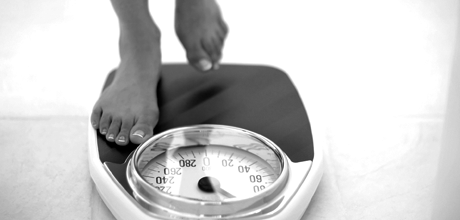The key to weight control is keeping energy intake (food) and energy output (physical activity) in balance. When you consume only as many calories as your body needs, your weight will usually remain constant. If you take in more calories than your body needs, you will put on excess fat. If you expend more energy than you take in you will burn excess fat.
Exercise plays an important role in weight control by increasing energy output, calling on stored calories for extra fuel. Recent studies show that not only does exercise increase metabolism during a workout, but it causes your metabolism to stay increased for a period of time after exercising, allowing you to burn more calories.
How much exercise is needed to make a difference in your weight depends on the amount and type of activity, and on how much you eat. Aerobic exercise burns body fat. A medium-sized adult would have to walk more than 30 miles to burn up 3,500 calories, the equivalent of one pound of fat. Although that may seem like a lot, you don’t have to walk the 30 miles all at once. Walking a mile a day for 30 days will achieve the same result, providing you don’t increase your food intake to negate the effects of walking.
If you consume 100 calories a day more than your body needs, you will gain approximately 10 pounds in a year. You could take that weight off, or keep it off, by doing 30 minutes of moderate exercise daily. The combination of exercise and diet offers the most flexible and effective approach to weight control.
Since muscle tissue weighs more than fat tissue, and exercise develops muscle to a certain degree, your bathroom scale won’t necessarily tell you whether or not you are “fat.” Well-muscled individuals, with relatively little body fat, invariably are “overweight” according to standard weight charts. If you are doing a regular program of strength training, your muscles will increase in weight, and possibly your overall weight will increase. Body composition is a better indicator of your condition than body weight.
Lack of physical activity causes muscles to get soft, and if food intake is not decreased, added body weight is almost always fat. Once-active people, who continue to eat as they always have after settling into sedentary lifestyles, tend to suffer from “creeping obesity.”
